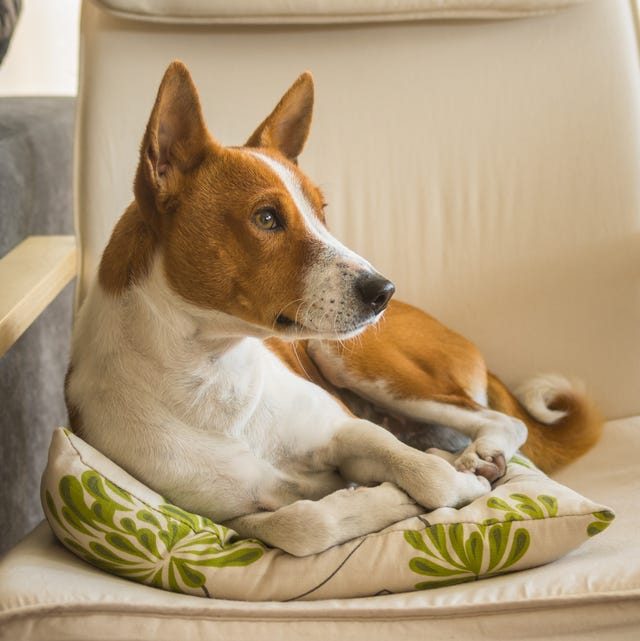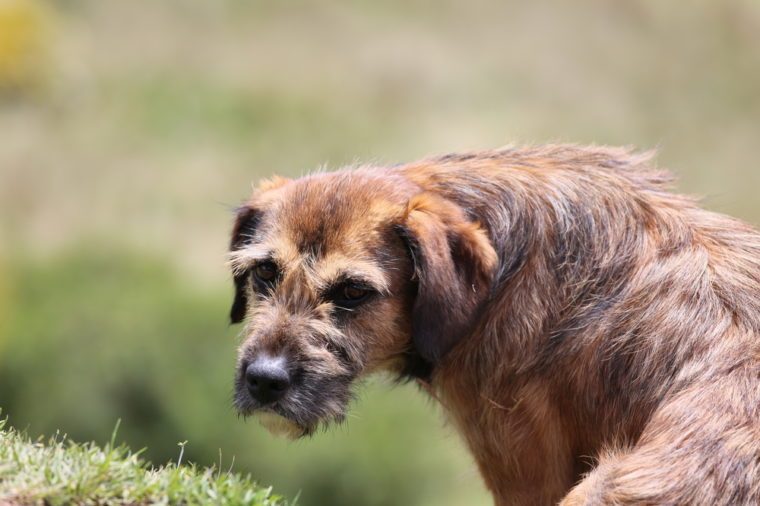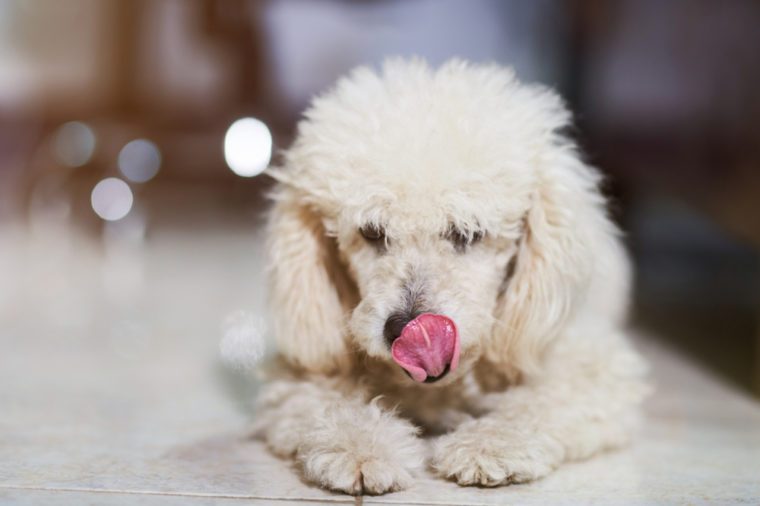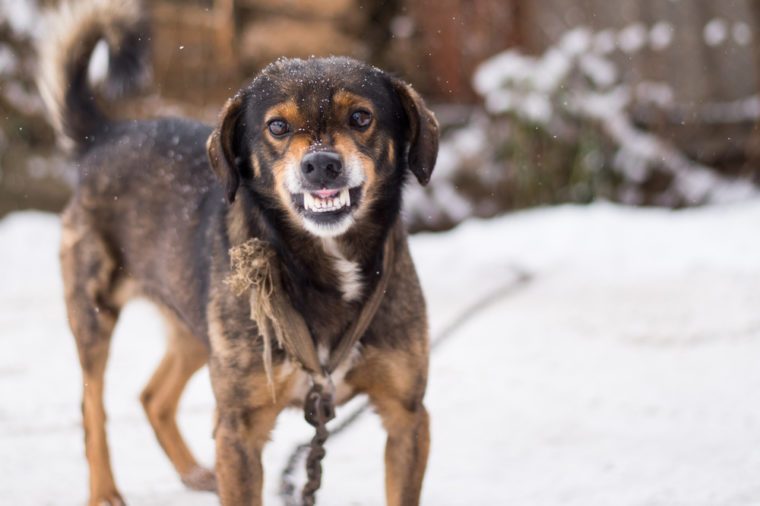 |
| Source: Women's Day
Everyone likes to say that there are cat people and there are dog people. But, believe it or not, there are some people who are fans of both. If you're one of those who love cats and dogs equally and just can't decide which type of furry friend you'd want to add to your family, perhaps one of these dogs that are like cats will entice you.
|

Showing posts with label dog. Show all posts
Showing posts with label dog. Show all posts
Thursday, February 27, 2020
Dog Breeds that act like Cats
Tuesday, October 15, 2019
Notes from Dr T’s Office
Ok. "Man! I just can't keep my eyes' open! It's cool, this mat is soft, had my belly rubbed, nails trimmed...geeeez! This vet visit thing is a no brainer! Everything I heard about vet clinics was a bald faced lie!! I'll be back...no problem...and that Dr.T?? He ain't right! JK Doc." You guys quit looking at this post so I can go back to sleep...I have some Z's that have my name on them! Enjoy. TVS.


Thursday, July 18, 2019
Why Is My Dog Vomiting White Foam?
Why Is My Dog Vomiting White Foam?
Is your dog vomiting white foam? Let’s look at some of the reasons for a dog vomiting white foam and find out what to do next when your dog is throwing up white foam.
Is your dog vomiting white foam? Bearing witness to your dog vomiting white foam can be disconcerting at the best of times and cause dog owners to panic at the worst. There are so many reasons for digestive upset in dogs, and they share so many similar symptoms, that general upset can be difficult for veterinarians to diagnose quickly. While some of the causes for a dog vomiting white foam — such as a dog finding rotting food in the garbage or ingesting a foreign object — can occur to any dog at any time, you can manage, treat or prevent the riskiest and most dangerous reasons for a dog vomiting white foam.
First, why is your dog vomiting white foam?
A dog who gets sick once before returning to normal is likely to have eaten something she shouldn’t. If a dog throws up several times in a day or for more than a couple of days in a row, on the other hand, schedule a veterinary appointment. The leading causes for a dog vomiting white foam include internal injury, infection and inconsistent eating habits. The major ones we’ll examine for a dog vomiting white foam include:
- Ingesting toxins, poisons, foreign objects
- Bilious vomiting syndrome
- Bloat
- Kennel cough
- Pancreatitis and other digestive inflammations
- Parvovirus
- Rabies
1. A dog vomiting white foam may have eaten something strange
Eating a foreign object can lead to an upset stomach, indigestion or intestinal blockages, all of which might reasonably point to a dog vomiting white foam. With the exception of dog toys, small, loose objects should be kept well out of the reach of indoor dogs. Household items that are toxic to dogs — especially household cleaners that not dog safe and pesticides directed toward insects or rodents — can also cause adverse reactions, like a dog vomiting white foam.
2. Your dog might be throwing up foam because of Bilious vomiting syndrome
Bilious Vomiting Syndrome in dogs is similar to acid reflux in humans. Bile and stomach acid are naturally occurring fluids that aid in the digestion and processing of food. On an empty stomach, however, they can cause irritation. That irritation can lead an otherwise healthy and hungry dog to ignore meals, or, in more extreme situations, vomit to expel the excess. The vomit from Bilious Vomiting Syndrome can be colored yellow, white, green, orange, brown or some mixture. Sometimes, it’s accompanied by slimy mucus.
Feeding an active dog smaller meals at regular intervals throughout the day — including a small snack first thing in the morning and last thing at night — may be the best and easiest way to address what could become a more serious problem. If excess stomach acid or bile are at fault, over the course of her life, a dog who produces excess digestive fluids can suffer from damage to her stomach or intestinal lining, leading to more serious digestive issues as she ages.
An alternate solution is acid-reducing medications. Consult with your dog’s veterinarian, who can recommend an antacid which may also help relieve your dog’s suffering, especially if your work schedule prevents you from being able to physically give your dog meals throughout the day.
3. Bloat may cause dogs to vomit white foam
Bloat, also known as gastric torsion or stomach dilation, is an extremely serious condition in dogs. In the worst cases, a dog’s stomach literally becomes twisted from its normal position in the abdomen. This not only traps air, food and fluids in the stomach, but it also restricts blood flow.
One of its early symptoms, before all movement into and out of the stomach cuts off, is a dog vomiting white foam. This condition most commonly occurs in deep-chested adult and senior dogs. While the precise reasons for it are unclear, prevention consists mainly of making sure dogs are not overactive just after meals.
4. A dog vomiting white foam can be a sign of kennel cough
Kennel cough is a mild illness, most commonly contracted in multi-dog households, at boarding facilities, veterinary offices, dog parks, and places where training classes are held. Wherever a large number of dogs are present, this upper respiratory infection can strike.
If a dog vomiting white foam has recently been in one of these situations, a veterinarian may reach a diagnosis much more quickly. Other symptoms to look out for are a hacking cough and eye discharge, or a runny nose. Kennel cough also tends to be a self-limiting sickness, typically running its course in about two weeks.
5. Pancreatitis might cause dogs to vomit white foam
Swelling or inflammation of the pancreas interrupts a dog’s normal digestive functioning. When food cannot be properly and regularly broken down, processed and eliminated, the dog has limited options for getting rid of the excess material in his stomach. Vomiting is one route, and white foam can accompany it.
Dogs with canine diabetes are at increased risk for developing pancreatitis, which is when white foam in the vomit is also linked to diabetes. Other symptoms include adopting a hunched-over position, noticeable abdominal pain and fever.
6. Parvovirus may cause foamy vomit in dogs
A viral infection seen most frequently in puppies and very young dogs who live in multi-dog homes, dogs get parvo through oral contact with feces. Signs of this illness generally begin within a week to 10 days of exposure to the virus.
Along with your dog vomiting white foam, the most alarming symptom of parvo is diarrhea that contains blood and has a strong odor. This is a deadly disease; however, most early-life combination vaccines help puppies build up immunity to parvovirus. An unvaccinated dog vomiting white foam may indicate parvo as the cause. Consult a vet as soon as possible.
7. A dog vomiting white foam might have rabies
Rabies is the last, and least likely, culprit for a dog vomiting white foam. We’re all familiar with the image of a rabid dog foaming at the mouth, but regurgitating foam only happens in the very last stages. By the time a dog takes to vomiting white foam, observers will have noticed much more worrisome signs, such as aggressive behavior. As with parvo, rabies is preventable with the appropriate vaccines and boosters.
The bottom line on a dog vomiting white foam:
An informed, observant and proactive dog owner has a distinct advantage. This means knowing your dog’s eating habits, noting any deviations, and being able to adjust as circumstances require. Changing the portions and frequency of a dog’s meals, whether she is a growing puppy or an active adult, can help prevent the buildup of bile and acid, which causes later-in-life digestive problems.
Keeping a dog in a clean environment— including regularly sanitized food and water bowls— minimizes the risk of contracting parasites as well as bacterial infections. The two most dangerous reasons for a dog vomiting white foam — parvo and rabies — are largely preventable with proper vaccination.
Source: Dogster Tuesday, April 23, 2019
Dog Eye Discharge — What’s Normal and What’s Not
Dog Eye Discharge — What’s Normal and What’s Not
Dog eye discharge — whether in the form of dog eye boogers, green eye discharge or something else — can be completely normal... or not. Here's what to know.
Have you ever wondered if your dog’s eye boogers are normal or not? A dog’s eyes can leak and tear for many reasons, some of which are normal and some of which are not. Tear stains are unsightly, but more importantly, dog eye discharge might indicate a problem that requires vet attention.
According to Beth Kimmitt, DVM, resident of ophthalmology at Purdue University’s College of Veterinary Medicine in West Lafayette, Indiana, a dog’s eye is always producing tears, and these tears typically drain at the corners of the eye. “Technically, a normal eye should not have any ocular discharge, but a small amount of clear discharge may be OK,” she tells us. Clear dog eye discharge might look brown and slightly crusty when it dries.
That said, some dog eye discharge is not normal. Read on to find out what’s normal and what needs a vet exam when it comes to dog eye discharge:
This type of dog eye discharge means it’s time to visit the vet.
If your dog has colored green eye discharge, yellow eye discharge or another colored eye discharge, schedule a vet appointment immediately. Other signs of problematic dog eye discharge include squinting, a red-looking eye, or if your dog is rubbing or pawing at his eye. If you think something is wrong with your dog’s eye, don’t wait too long to make that vet appointment — his eyesight could be at risk.
Abnormal eye leakage might signal a dog eye infection or other issues.
“The presence of ocular discharge is a non-specific sign,” Dr. Kimmitt says. “This means that it can be caused by a variety of ocular disorders. Common causes of dog eye discharge include ulcers, entropion, keratoconjunctivitis sicca and conjunctivitis (allergic or bacterial).” A corneal ulcer is damage to the cornea, which is the clear membrane that covers the iris and pupil.
Entropion is a condition in which the eyelid rolls inward, causing eyelashes to rub against the cornea. Keratoconjunctivitis sicca (called dry eye) is dryness of the conjunctiva, which is membrane that covers the white part of the eye. Conjunctivitis (sometimes called pink eye) is inflammation of the eye. A vet exam and tests can pinpoint the cause of your dog’s abnormal eye discharge.
Certain breeds are prone to dog eye discharge.
Brachycephalic dog breeds like Pugs and Boxers might have slightly more eye leakage than other breeds due to the combination of a short nose and large, round eyes. In these breeds, some dog eye discharge might be normal, especially if it’s clear, but abnormal dog eye boogers deserve a vet visit.
Poodles and Cocker Spaniels are more prone to blocked tear ducts, too. Usually, these ducts drain the tears from your dog’s eyes out through the nose and back of the throat. With the tear ducts blocked, there’s nowhere for the tears to drain, so they spill over the eye rims and run down the face.
If you see brown tear stains, it doesn’t necessarily mean something is wrong.
“Dogs with white hair coats (like Maltese, Poodles, etc.) might show the discharge easier than other colors,” Dr. Kimmitt says. You can help minimize dog tear stains by wiping the under-eye area frequently and keeping it as dry as possible. You can also try one of the whitening products sold specifically to help with tear stains.
It’s important to keep your dog’s eye area clean.
“A soft, wet cloth can be used to gently wipe away the discharge,” Dr. Kimmitt advises. You can also use a veterinary eye cleaning product to combat dog eye discharge — just make sure it doesn’t contain any alcohol.
Source: Dogster
Thursday, March 21, 2019
Signs Your Dog Is Mad at You
Signs Your Dog Is Mad at You
No, they won’t slam doors or yell at you, but there are definite indicators that your pooch is angry with you. Read on to find out what they are.
1. Her ears show she is unimpressed
When a dog’s ears are hanging back, along with a lowered head, closed mouth, and tight lips, it can mean she’s mad at you, says April Olshavsky, American Kennel Club dog evaluator, trainer, and behavioral consultant. “Body language is the only way dogs can communicate with us,” she explains. “By studying your dog’s body language, you can learn a lot about her emotions.” The remedy? Some serious belly rubs and ear scratches. “Chances are, your dog will forget whatever it is you did to upset her with just a few minutes of TLC,” she says. Don’t miss these 19 things your dog really wishes she could tell you.
2. He’s got a case of the yawns
Contrary to what you might think, big yawns don’t mean your dog is bored with your corny jokes— it’s actually a sign that he is getting stressed, upset, and agitated, says Sara Taylor CPDT-KA, spcaLA director of animal behavior and training. It’s important to pay attention to this signal and immediately remove your dog from the situation he is not coping well with, she says. By the way, smiling at your pup is one sure way to make him happy, too.
3. She keeps licking her lips when
there’s no food nearby
Dogs may show that they’re mad or in distress by licking their nose and lips repeatedly, Taylor says. This is especially true if there’s no drool-worthy food nearby to get their saliva flowing from hunger. One situation she sees this happen a lot is when dogs are being hugged by children or strangers. The solution is simple. “Stop any restraining or hugging,” she says.
4. He won’t look you in the eye
If a person refused to meet their gaze and turned their back on you, you’d get the message that they were angry loud and clear. It’s the same with dogs, says Erin Askeland, CBCC-KA, CPDT-KA, dog training and behavior expert at Camp Bow Wow. “A dog who is happy and comfortable will likely be willing to make eye contact with his owner and seek out their attention whereas a dog who is angry or upset may avoid this type of interaction and move away from their owner, leave the room, or even sleep in a different area,” she says. How to fix this? Offer calm, quiet time together to help you and your dog relax, say reading a book or listening to soft music, she says. Don’t miss these superpowers dogs have that prove they’re cooler than humans.
5. She absolutely refuses to sit and stay
Think your dog knows what you want her to do and is refusing in a fit of pique? You may be right. When dogs know cues well, they respond to them, so if your dog suddenly stops responding to a normal cue, that could be an indication that she is upset by something in her environment or by you, Askeland says. Before you get upset too, take a moment and check yourself. Are you feeling stressed, angry, frantic, upset, or sad? Your feelings can influence your dog’s, she says. “Take measures to calm yourself down and this will help your dog feel more comfortable and get back to your loving relationship,” she says.
6. His back goes rigid and his body is stiff
“When a dog is really, really upset he’ll often go rigid, his body stiff, hard and unmoving,” says Melissa McGrath-McCue CPDT-KA, pet behaviorist and author of Considerations for the City Dog. “It’s almost as if he’s saying ‘take one more step, I dare you!’” If you see this combined with flattened ears and wide, alarmed eyes, you need to stay away and step back as your dog is feeling really stressed, mad, and even threatened, she says. Give him his space or he may feel like he has to defend it which can, in some cases, lead to biting, she adds. Smaller dogs may be more susceptible than larger ones to feeling trapped; that’s just one of the many benefits big dogs offer.
7. His tail is tucked and still
If your pup is in a crouching pose with his tail tucked between his legs, he might be taking your criticism more personally than you’d thought. This posture shows he’s guarded on the defensive. “Dogs, like humans, are emotional creatures,” Olshavsky says. “If you’ve scolded them, or spoke sternly, they can pout like a teenager.” If you see him backed up like this, lower your voice and talk softly and soothingly. “This will re-establish your bond together and will reinforce the trust your dog had in you,” she says.
8. The whites of her eyes are showing
Let’s be honest, it’s never a great sign when the whites of any animal’s eyes are showing. Whether she’s showing fear, confusion, disgust, illness, or anger, widening of the eyes indicates a high state of alertness and you’d best pay attention. Why she’s upset may be more of a mystery. “It could be something as simple as you’ve forgotten to feed them,” Olshavsky says. To fix this, try giving her a snack. Hangry is a real thing for dogs too. Be sure to know these signs of cancer in dogs.
9. He is cowering behind the sofa
Most people associate cowering and hiding with fear and while that can definitely be true, fear is also closely linked to anger in dogs, Taylor says. “Cowering indicates a high level of stress,” she explains. “If your dog is also trying to hide and get away this means your dog is overwhelmed.” Your job as a responsible pet owner is to then remove him from the situation before he gets more overwhelmed and acts out. You’ll know it’s working when you see these signs your dog really trusts you.
10. She lets out a primal growl
“Growling is an obvious but frequently misunderstood sign,” Taylor says, adding that it shows your dog is very uncomfortable and upset. “It is often used as a warning for the purposes of making something stop. For example, he may growl if you’re trying to move your dog from his comfortable bed for late night potty time by using her collar or when a stranger approaches your dog and tries to pet her,” she adds. Resist the urge to yell at or otherwise punish your dog for growling as that damages trust, doesn’t teach your dog appropriate behavior, and can often worsen aggressive behavior, she says. Find out the other 13 surprising things you didn’t know about your dog.
11. He goes into beast mode
Just like your roommate who counted out your M&Ms from the communal bag, dogs place a high emphasis on fairness. “Dogs get mad if they have been treated unfairly, and may act instantaneously with bursts of rage,” Olshavsky says. What this looks like may be different for each dog but you’ll know it when you see it. The solution is simple: More exercise. “Dogs need to get that energy out in some way and a daily walk is the perfect way to do it,” she says. Find out the 50 secrets your pet can’t tell you.
12. She tells you — loudly
Think dogs don’t have a voice? Then you’ve never seen a puppy kenneled. They may not be able to use words but they can vocalize their displeasure. Whimpering is the canine version of whining, Olshavsky says, and it’s every bit as grating as the human kind. To cut down on whining, set aside a few minutes each day just to play and work on tricks, she says. Give her your attention when she’s not whining and she’ll learn that whimpering/whining doesn’t work.
13. He groans like an old man with kids on his lawn

Yes, some dogs actually groan in frustration when they don’t get their way, Olshavsky says. “Some dogs are quick to do this, while others reserve it for times when they are especially upset,” she explains. A major cause of groaning? Getting locked in their crate, outside, or somewhere else far away from their beloved humans. It’s fine to banish your dog during certain times or from certain areas but make sure you’re giving him plenty of regular time with you every day. You could enjoy these funny dog videos and have a good laugh together.
14. She pees in your shoes

15. He stays just out of arm’s reach

Source: Written by Charlotte Hilton Andersen
Labels:
dog,
dog treats,
dogs,
Dr Thompson Vet,
pet life,
pets,
tips for pets,
train your dog,
training,
training your dog,
vet,
vet articles,
vet blog,
veterinarian,
veterinary,
veterinary blog,
veterinary clinic
Location:
Springtown, TX 76082, USA
Subscribe to:
Posts (Atom)
Hot for the summer
To avoid these problems and enjoy the summer season with your pet , here're the tips to keep in mind. Provide plenty of water and...

-
Dr. Tommy Thompson is the owner and veterinarian at Thompson Veterinary Services. Since 2008, Dr Thompson has been providing c...
-
Source: Petsits Don't forget to take your pet to work on June 26, 2020! Make sure to take care of your pet while letting them visit yo...
-
Protect outdoor animals If there are outdoor cats, either owned pets or community cats in your area, remember that they need protecti...














